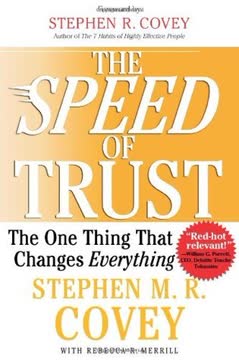Key Takeaways
1. Understand the cyclical nature of business and adapt accordingly
"If you're not moving forward in business, you're developing the first signs of death. The same law applies to you, personally."
Recognize business cycles. The economy and industries go through predictable phases: peak, plateau, downturn, slump, recession, depression, recovery, and rise. Each phase requires different strategies and approaches.
Prepare for change. Anticipate shifts in the market and be ready to adapt your sales tactics accordingly. During downturns, focus on maintaining existing client relationships and finding creative ways to add value. In upswings, capitalize on opportunities for growth and expansion.
Develop resilience. Build a diverse client base and skill set to weather economic fluctuations. Stay informed about industry trends and be willing to pivot your approach when necessary.
2. Develop a customer-centric approach to sales
"Selling is not about products. It's about serving the needs of people."
Focus on client needs. Shift your mindset from selling products to solving problems. Understand your clients' pain points and tailor your offerings to address their specific challenges.
Build long-term relationships. Prioritize customer satisfaction over short-term gains. Regularly follow up with clients, offer valuable insights, and provide exceptional after-sales service.
Personalize your approach. Take the time to understand each client's unique situation, preferences, and goals. Customize your communications and recommendations accordingly.
3. Master the art of qualifying potential clients
"A professional knows when his or her most effective presentation is not to give one. They learn this in qualifying."
Ask strategic questions. Develop a set of targeted questions to efficiently assess a prospect's needs, budget, and decision-making process. Examples include:
- What are your current challenges?
- What solutions have you tried before?
- What's your timeline for implementing a solution?
- Who else is involved in the decision-making process?
Listen actively. Pay close attention to the prospect's responses and look for both explicit and implicit cues about their needs and readiness to buy.
Prioritize your time. Focus your efforts on prospects who are most likely to benefit from your product or service and have the ability to make a purchasing decision.
4. Build and maintain trust with clients
"Always remember that other vendors are trying to capture your clients from you just as you're going after theirs."
Demonstrate integrity. Be honest and transparent in all your interactions. Follow through on your promises and commitments consistently.
Provide value. Share relevant industry insights, offer helpful advice, and go above and beyond to support your clients' success.
Communicate effectively. Keep clients informed about product updates, industry changes, and potential challenges. Be proactive in addressing concerns and solving problems.
5. Overcome sales resistance through empathy and education
"Confusion in the mind of a potential client is a sales killer."
Identify sources of resistance. Common barriers include fear of change, budget concerns, and lack of trust. Recognize these obstacles early in the sales process.
Address concerns proactively. Anticipate common objections and prepare thoughtful responses. Use stories, case studies, and testimonials to alleviate fears and build confidence.
Educate your clients. Help prospects understand the value of your offering by clearly explaining how it addresses their specific needs and challenges. Use analogies and visual aids to simplify complex concepts.
6. Utilize effective closing techniques tailored to challenging times
"No passion so effectually robs the mind of all its powers of acting and reasoning as fear."
Adapt your approach. Recognize that during tough times, clients may be more hesitant to make decisions. Tailor your closing techniques to address their specific concerns and fears.
Create urgency. Highlight the potential consequences of inaction or delay. Use time-limited offers or demonstrate how quickly the solution can begin delivering value.
Use proven closing strategies. Employ techniques such as:
- The "Economic Truth" Close: Emphasize the long-term value over short-term savings
- The "Competitive Edge" Close: Show how your solution provides an advantage over competitors
- The "Business Productivity" Close: Demonstrate how your offering improves efficiency and morale
7. Implement cost-cutting measures while maintaining professionalism
"Being forced to change can be painful in all sorts of ways when you resist it. It's much less painful when we embrace change, knowing that it's for our own good."
Analyze expenses. Carefully review your business and personal expenses to identify areas for potential savings. Focus on reducing non-essential costs without compromising the quality of your work.
Optimize resources. Look for ways to increase efficiency in your daily operations. This may include:
- Leveraging technology to automate tasks
- Negotiating better rates with suppliers
- Exploring remote work options to reduce overhead costs
Maintain a professional image. While cutting costs, ensure that your appearance and client interactions continue to convey success and competence. Invest strategically in areas that directly impact client perception, such as your wardrobe, vehicle maintenance, and presentation materials.
8. Continuously improve your sales skills and product knowledge
"Keep thinking, 'Would I want to do business with me?'"
Invest in learning. Allocate time and resources for ongoing education. This may include:
- Attending industry conferences and workshops
- Reading relevant books and publications
- Participating in online courses and webinars
Stay informed. Keep up-to-date with industry trends, competitor offerings, and changes in your clients' businesses. This knowledge will help you provide more valuable insights and recommendations.
Practice and refine your skills. Regularly review and improve your sales techniques, communication skills, and problem-solving abilities. Seek feedback from colleagues, mentors, and clients to identify areas for growth.
Last updated:
Review Summary
Reviews for Selling in Tough Times are generally positive, with an average rating of 3.71 out of 5. Readers appreciate the practical sales advice and emphasis on returning to basics during challenging times. Some find the content similar to other sales books, while others value the reminders and inspirational quotes. The book is praised for its easy-to-read style and useful information on maintaining business during economic downturns. Readers highlight the importance of empathy, reducing sales resistance, and adapting to different market cycles. Overall, it's considered a solid resource for sales professionals.
Similar Books










Download PDF
Download EPUB
.epub digital book format is ideal for reading ebooks on phones, tablets, and e-readers.







